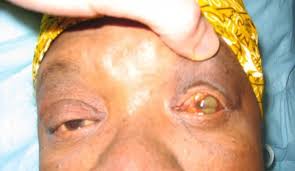
The reported outbreak of yellow fever in parts of Delta and Enugu states should be taken with great concern for many reasons. One is that having last been recorded many years ago in Nigeria, it has been generally considered as an extinct disease. Two, the heavy casualty the disease left in one of the states is an alarming indication of the ill-preparation of public health authorities in the state, which may be a reflection of the same situation in other parts of the country. Moreover, the outbreak is a stark reminder that Nigeria might have focused too much on Coronavirus pandemic in the past 10 months, at the expense of concern for other diseases.
For re-emerging after such a lull, questions need be asked seriously regarding what exactly prompted the outbreak. Has the cause to do with known reasons or fresh phenomenon that has not been previously analysed? Or are people unduly careless in their activities which may be instrumental to the return of yellow fever? Did somebody or agency fail in its duty of care and appropriate warning? Did local researchers and scientists follow up on known facts about the disease, or has everyone gone to sleep believing that yellow fever is terminally demised? These are some of the issues that need be unraveled before the dust settles.
Clearly Nigerians were caught unaware when what was initially construed to be a strange disease turned out to be yellow fever, thus raising alarm within government and public health circles as to what triggered the disease. Yellow fever was thought to have been virtually eradicated. And so, for it to manifest in a deadlier manner at this time should be a source of concern.
What was regarded as a mysterious disease ravaged the communities of Ute-Okpu, Ute Erumu and Idumesa in Ika North-East Local Government Area of Delta State leaving some 30 people dead according to unconfirmed reports. And in Enugu State, the disease was reported from Etteh-Uno and Umuopu communities in Igbo-Eze North Local Council. The level of casualty has not been ascertained.
A possible explanation for the disease’s sudden manifestation could be that enough research has not been done on the virology of the disease for easy identification to avoid confusing it with other kinds of fever that present similar symptoms.
The universities and research institutes should take it up as a challenge to isolate all endemic diseases that present fever as symptom.
But for the World Health Organisation (WHO) that reportedly offered prompt support to the Nigeria Centre for Disease Control (NCDC) and Delta and Enugu states, to investigate and respond to the deaths from the outbreak, there could have been worse casualties. As it were, the reported deaths constitute an embarrassment amid the ravaging COVID-19 pandemic.
The Ministries of Health for Enugu and Delta states reportedly notified the NCDC on November 2 and 3, 2020 of cases presenting with symptoms indicative of viral hemorrhagic fever. As at November 6, 2020, three samples from Delta and one from Enugu tested positive for yellow fever at Irrua Specialist Teaching Hospital Laboratory and NCDC’s National Reference Laboratory, Abuja. Additional blood samples similarly tested positive, which then confirmed the outbreak of yellow fever. By then, a number of deaths had been recorded.
The Delta State Commissioner of Health, Dr. Mordi Ononye assured that the state government was taking all precautionary measures to localise the yellow fever in order to prevent it from spreading to other parts of the state even as authentication of the results on the samples’ tests was being awaited from the disease control office in Dakar, Senegal.
He announced that as part of the measures to immediately contain the outbreak, “a massive immunisation exercise” would commence across Delta State beginning with the affected communities. He advised residents aged between nine months and 44 years, who had not been vaccinated against yellow fever in the past 10 years, to make themselves available for vaccination as it is free of charge.
Yellow fever is caused by a virus spread through the bite of infected Aedes aegypti mosquitoes, a specie that bites during the day, subsequently causing serious symptoms, including high fever, loss of appetite, nausea, muscle pains, headache and jaundice (yellowing of the skin and eyes) in affected patients. Some die from the complications of internal bleeding and organ failure.
Infection with yellow fever virus is prevented by a vaccine that provides immunity for life. Large epidemics of yellow fever occur when infected people introduce the virus into heavily populated areas with high mosquito density and low vaccination coverage.
In Delta State, for example, all cases, including that of a-year-old baby, have no history of yellow fever vaccination.
Investigations further revealed that adults who bring their children for immunisation have always refused to receive yellow fever vaccination when offered by health workers.
It is reassuring that epidemiologists and other health professionals in WHO, NCDC and NPHCDA are working in support of state public health teams or Rapid Response Teams (RRTs) to contain the outbreak. But there is need to establish why the disease has episodic occurrence, and the possibility of a yet unknown different vector. No effort must be spared to get to the roots of the outbreak and stop its spread.
END

Be the first to comment